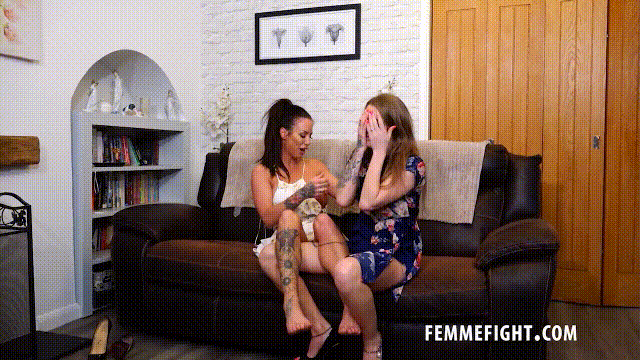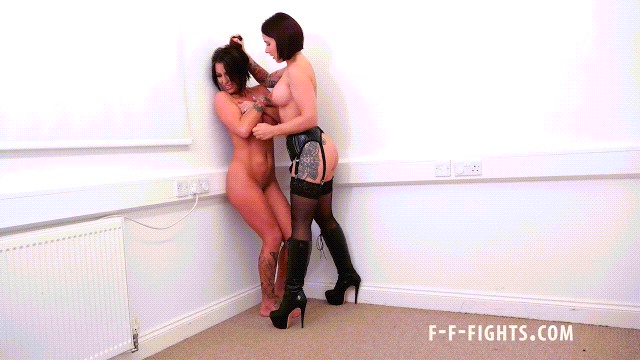Introduction
Thank you to everyone who has been following this series. Finally, we get to the good stuff – writing fight scenes. Obviously, the fight scene is the most important part of your story. It’s the main reason anyone opens our posts. However, fight scenes can be the most difficult sections write. You will need a coherent action sequence, along with a narrative that captures the excitement and sexiness that you envisioned. I hope this part of the series will give you some useful tips.
Disclaimer: I don’t consider myself the best qualified writer to give advice on writing fight scenes, as there are plenty of writers here who do it better. Also, each writer has his/her own method for describing fight action. I will explain my method and hope you find some things helpful. I invite other writers to contribute their ideas.
What goes into a fight scene?
I think of fight scenes as multi-layered.
1. Action sequence – This is the bare-bones skeleton of your story, in which everything else hangs. I create a mental image of how the fight will proceed from beginning to end. At this point, I’m only interested in observable physical facts of the fight. The sequence is neutral without emotion, eroticism, etc. Those will be added later. Conceptualizing an action sequence will be our first step
2. The add-ons – These are the important extras to help bring your skeletal sequence to life. These are the screams, grunts, bruises, sweat, scratches, the environment, etc. This is where you create the intensity, flowing adrenaline, ferocity of the action. These will be blended into your action sequence.
3. The story – the fight is a story within a story. It should also be a continuation of your overall story. Don’t forget the big picture. What are the characters feeling? Spectators? Husbands? Character dynamics? Don’t forget the plot. This is the psychological, emotional, erotic aspect of the fight.
Action Sequence
Preparation
Before you start creating your fight scene, you might consider:
1. What are your characters relative strengths and weaknesses? These should come into play during the fight. Is one fighter bigger and stronger than the other? How will she use her power advantage? Will she wear her opponent down? Or will she run out of gas against the smaller faster fighter? Is there an age difference? Will the older, more experienced fighter dominate. Or will she tire out against a more youthful, energetic opponent?
2. Other contrasts such as blonde vs. brunette, tall vs. short, ethnicities, will be useful when you write your narrative as a way to tell the fighters apart during the fight. We will discuss this in the next post.
3. Don’t forget the environment and setting you created. Is the fight in a barnyard? Hotel room? By a lake? Etc. These peripherals will also be a part of your fight scene.
Getting Started
Lessons From Pro Wrestling
I grew up with pro wrestling frequently on TV in our house; my dad and brothers were big fans. We lived in a resort town where live shows ran at a sports arena each month. I met several pro wrestlers in person and was amused at how the “heels” were actually nice guys. I was never a huge fan, but I appreciated the showmanship and athleticism; it was obvious to me that pro wrestling was tough work. Later, when I studies theatre in college, my respect for pro wrestling increased. Rather than low brow entertainment, I saw it as a unique form of theatre as its own genre. I’m still fascinated how these men and women work their craft.
So, when you watch a pro wrestling match, what is really happening? Using its own lingo, a pro wrestling match is two workers performing a sequence of “spots” interspersed with “transitions” and “rest holds” culminating in a predetermined ending.
Got that? For those of you unfamiliar with these terms:
Spots – a maneuver or series of moves. These can be basic or highly complex. Common spots are body slams, power bombs, drop kicks, DDTs, pile drivers, leaps from the top rope, etc. “High spots” are especially spectacular and risky spots designed as crowd pleasers. E.g. moonsault off the top rope, Mick Foley falling from the top of a cage onto a table below.
Rest Holds – A slowing of the action to give both wrestlers a breather while deciding what spots to do next. Example would be a double knock down, headlocks. Rest holds can be made to look painful (chin lock, “nerve holds”) when, in fact, the wrestlers are taking a break.
Transitions – wrestlers maneuver into place to set up a spot (e.g. climbing the top rope to execute a “superplex”).
Traditionally, pro wrestling matches were not scripted. The wrestlers were told in advance the winner, the manner of ending, and the length of the match. They would work together, improvising the rest of the match, as one of them would “call the match,” communicating by verbal and nonverbal signals the sequence of spots they would perform.
Pro wrestling stories are the easiest ones to write. The tension is precooked. The moves are all defined. You just need to think like a pro wrestler and string your spots together.
From Pro Wrestling to Catfights
Some of you are saying, “Why are you telling us this? I don’t care about pro wrestling. I want to write about catfight.” Fair enough. Here’s the lesson. The same template used for a pro wrestling match can be used for catfights, or any other form of fighting. It can even be used for sexfights and titfights. You will redefine what you consider as “spots.”
Spots in catfights might include hair pulls across a room, slaps to the face, clawing boobs, etc. If you desire, you could throw in some wrestling holds like headlocks, body scissors, etc.
So, let’s get started.
Step 1: Decide on a winner and method of victory. Your fight scene will have a beginning and middle and late phase working toward your established ending. I presume you already decided on a style of fight. Think about the length and tempo of your fight. Will it be a short wild brawl? An epic marathon? Multiple rounds? Tempo will be very important to your story. It is important to have this planned before writing. Deciding as you write runs the risk of a disjointed fight scenes and abrupt endings. (Thanks to sinclairfan for reminding me of this last point.)
Step 2: List the spots you want in your fight
Open a separate document or pick up a paper and pen. Write down your favorite aspects of a catfight you want in your story. This need not be a complete list at this point. Think about what are your essentials. Belly punch? Kick to the crotch? Claws across the back? Make your list. Decide who is the aggressor and who is the victim for each spot.
Step 3: List your spots in a chronological sequence.
Start with the opening. Will the fighters charge at each other in a furious clash of bodies? Start out as a stand-up slap or fist fight? Or tentatively feel each other out like pro boxers or wrestlers. Then, place the spots on your list below the opening, in the order they will occur, with the ending at the bottom of the list. It’s alright to have gaps in the action at this point. You are only creating an outline. Don’t make your list into narratives at this point. Your outline might look like something like this:
A and B charge at each other throwing wild slaps, some land on face and arms
A and B grab at each other, pulling each other to the floor
A and B catball across the floor
A takes the advantage, mounting B on her back, throwing slaps
B grabs hair and pulls, dislodging A
B gets to her feet and kicks A in the belly
Step 4: Filling in Gaps and reversing advantages
Notice I put in some transitions. Catballing across the floor can be considered a transition or a spot. It doesn’t matter, but it bridges two actions. Unless your fight is one-sided, you will need methods to shift from one fighter as the dominant one to the other. Say Fighter A is dominating, but you want to reverse to Fighter B as the one in charge. You will need spots or transitions to change the advantage. For example:
A is pelting B with slaps and punches, but B manages to land one hard blow to turn the fight around.
A has B mounted and is throwing slaps, but B bucks her hips and thrown off A. B rolls on top of A and twists her arm.
B could also resort to scratching, biting, breast and crotch attacks reverse her fortune. She could also execute an actual wrestling move, like a hip toss or judo throw if that fits the story you want.
To summarize, list your spots, think of how you’d like to transition the fighters from one spot to the next (filling in the gap), and how you would like to switch advantages between the fighters.
A holds B in a standing headlock (transition)
B pounds A in the ribs with her free arm until A breaks the hold (Spot)
B swings a punch at A’s head but misses, B is off balance (transition)
A buries her knee into B’s belly doubling her over (spot)
A tackles B to the floor (transition)
A gets on top of B, pounds the back of her head into the carpet (spot)
B manages to get her hand up and digs her nails into A’s right boob (spot)
B pulls A off of her, grabs her hair and forces her to her feet (transition)
B punches A in the crotch (spot)
I hope you are still following. Continue until you have completed your outline ending with one fighter submitting or whatever ending you’ve decided. I know it sounds like a boring play-by-play sportscast, but that’s OK. This is NOT your story. It is an outline from which you will work your narrative.
Don’t worry if your outline still has gaps. It is not necessary to give a complete second-by-second account of the fight. In fact, it is often better that you don’t. There are tricks you can use to truncate time and skip over fairly dull narrative. We’ll discus those later.
Step 5: Begin to list your extras.
Think of how the fight sequence will create visible and sensory effects on the fighters. Make a list the ones you plan to include in your story. Will there be screaming? Crying? Trash talking? How will the fighters’ appearance change during the fight? Messy hair as ponytail bands become undone? Clumps of hair pulled out? Other effects are sweat, red skin splotches, scratch marks, early bruises, bite marks, facial expressions of pain, gasping for air, favoring an injured body part, etc.
Keep in mind, at this point, we are only interested in the effects on our fighters. We’ll get to involvement of spectators and the environment later.
Look at your action sequence and think of where you would like to insert the affects you listed.
We will end Part 1 at this point. Your homework, boys and girls is to outline an action sequence of your preferred style of fight, featuring spots you wish to include in your story. Start thinking about the effect the fight is having on your combatants. Next time, we’ll talk about preparing for your narrative.



